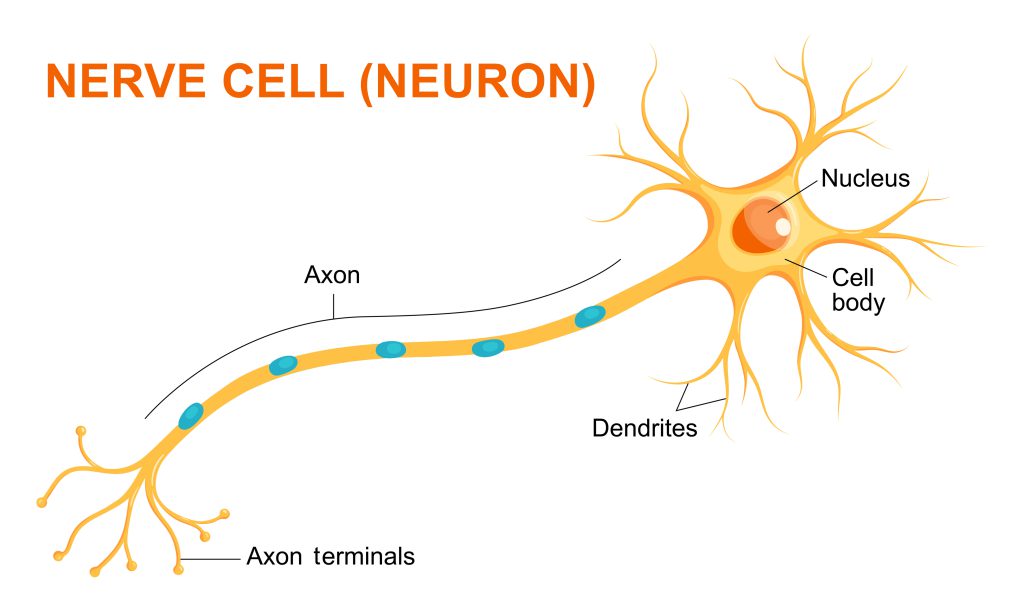Nerve cells, also known as neurons, carry information through our bodies using electrical impulses and chemical messengers called neurotransmitters. A nerve cell’s size and shape depend on its role and location, but nearly all nerve cells have three main parts:
- Dendrites that extend like branches and receive signals
- A cell body containing the nucleus that holds the genetic material of the cell and controls its actions
- An axon, a long structure that transmits messages

The human body contains billions of interconnected nerve cells that carry information to, within, and from the brain. Nerve cells are required for perceiving our surroundings and responding to them. For example, if you accidentally touch a thorn, you draw your hand back without even thinking about it, thanks to some complex nerve cell choreography. First, receptors in the skin detect the thorn and stimulate the dendrites of surrounding sensory nerve cells. In each of these cells, the dendrites send an electrical impulse to the cell body, which passes the signal on to the axon.
Once the electrical impulse reaches the end of the axon, it triggers the release of neurotransmitters into the small gap, or synapse, between the axon and a neighboring cell’s dendrites. The neurotransmitters cause an electrical response in the neighboring cell, which transmits the signal to the next cell in the chain. This process continues until the signal reaches the spinal cord, which then sends signals to the muscles in your hand to pull it away from the thorn. Different nerve cells also send a message to the brain so it becomes aware of the pain and can move your body away from the thorny plant.
In addition to their roles in touch and movement, nerve cells are essential for hearing, sight, smell, and taste. They not only help keep us from harm, but also enable us to experience the world in all its richness.
NIGMS-Funded Nerve Cell Research
Many scientists supported by NIGMS study nerve cells. Some of these researchers are:
- Examining how general anesthetics affect nerve cells, which could support the development of treatments for sleep and pain disorders
- Determining whether altered nerve cell signaling between brain regions contributes to the common issue seen in people with chronic pain of decreased cognitive flexibility—the mental ability to switch thinking between different concepts
- Investigating cellular processes that help prevent and repair damage to nerve cells in the inner ear, which could ultimately lead to therapies for hearing loss
- Improving methods for maturing stem cells into motor nerve cells, which help control muscle activity, as lab-grown motor cells may lead to treatments for spinal cord injuries and diseases such as amyotrophic lateral sclerosis (ALS)
Learn about other scientific terms with the NIGMS glossary.

This post is a great supplement to Pathways: The Anesthesia Issue.
Nerve cells allow us to feel pain (among other things), and anesthetics, as described in Pathways, prevent us from feeling pain.
Learn more in our Educator’s Corner.


Awesome read. Super informative and well written
Thanks for the info and the great research!